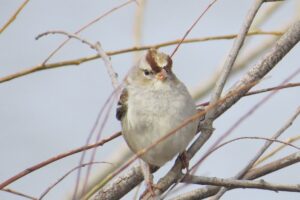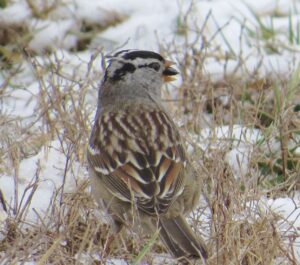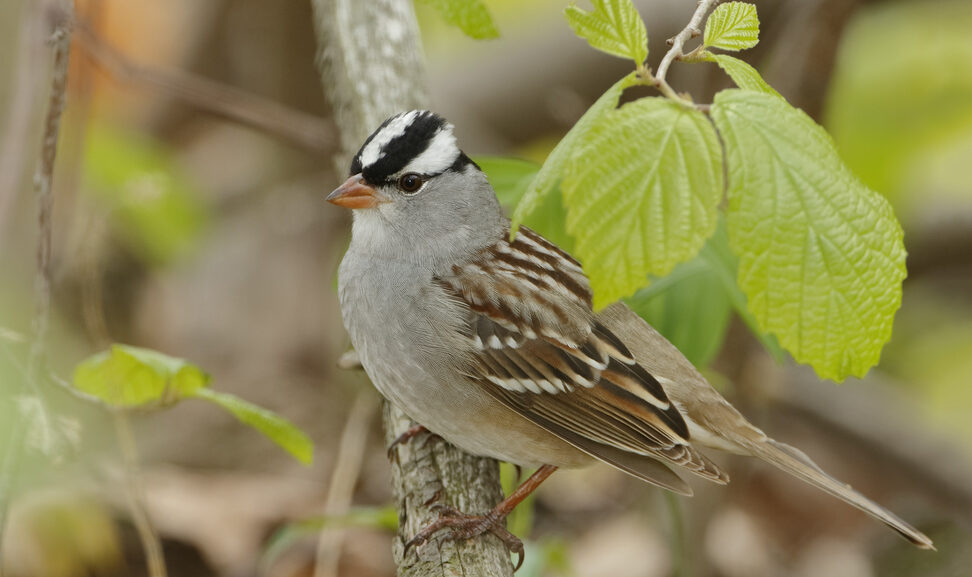White-crowned Sparrow, Zonotrichia leucophrys
Bill Rowe
The North American sparrows are one of our most diverse groups: we have about 21 regular species in Missouri, with several more that have occurred as vagrants from the West. So far, however, we have covered only four of these as Birds of the Week—so it’s high time for another one. The White-crowned Sparrow, one of the handsomest and most immediately engaging, comes down to us as an abundant fall migrant from northern and western Canada, peaking in November and staying for the winter in fields, brush, and hedgerows throughout much of the central and southern U.S. and northern Mexico. If you visit the western parts of the continent, you may find the White-crown as a summer breeding bird much farther south, as for example in the Colorado Rockies, where it nests at high elevations near treeline, or along the West Coast. Its song will alert you to its presence, starting with a couple of clear notes like a White-throated Sparrow, then “degenerating” into buzzes and trills; it will sing once in a while during its fall and winter stay in the Midwest, and then a lot more on spring migration. Reminder: The North American sparrows just referred to are in a family of their own, different and quite separate from the Old World sparrows, of which we have two introduced species: the House Sparrow and (around St. Louis) the Eurasian Tree Sparrow.
IDENTIFICATION: Any White-crown is a fairly large, long-tailed, alert-looking sparrow, usually with its head up, displaying its crown stripes, which are bold black and white in the adult (shown above), brown and gray in the first-fall and first-winter immature bird (shown below, left). The underparts are smooth light gray in the adult and a slightly dingier gray-buff in the immature; all ages typically have a pink bill. Some of our Missouri birds are of the “Gambel’s” subspecies that comes from farther northwest (shown below, right); it has a more orange or yellow bill and no dark mark in the lores (the area between the eye and the bill).
ST. LOUIS STATUS: Common in migration; more local but often numerous in winter, in semi-open areas with weeds, brushpiles, or dense shrubbery. Visits suburban feeders occasionally.
Learn more and listen to the songs and calls of White-crowned Sparrows here.


First-winter immature
Photo Credit: Bill Rowe
Adult of “Gambel’s” form
Photo Credit: Bill Rowe




